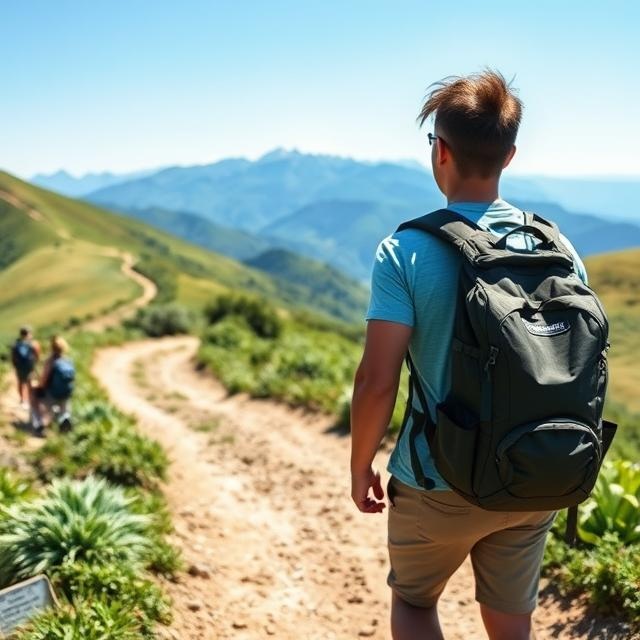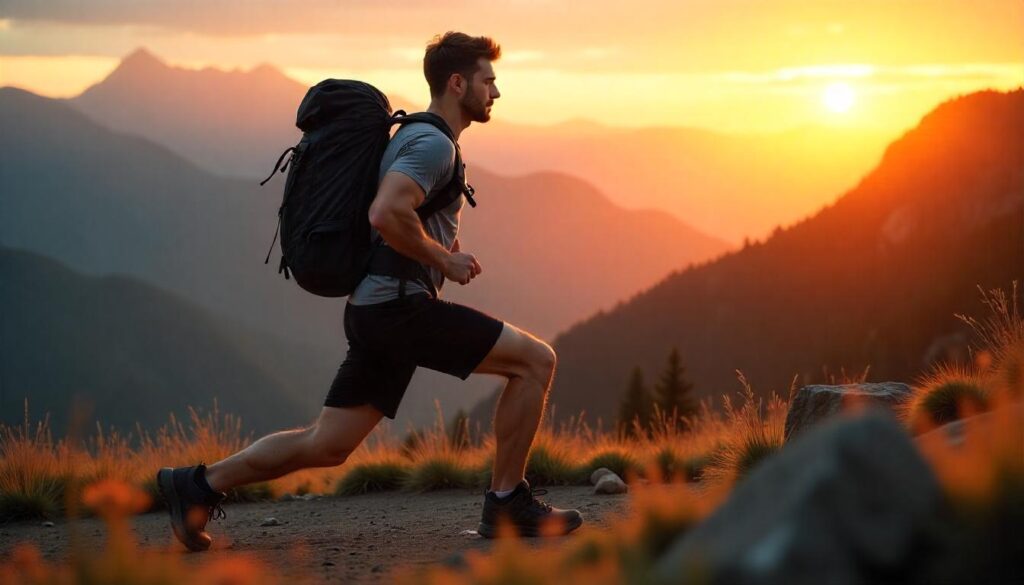
The story of Mike Turner, a Presbyterian minister and experienced hiker, is one of resilience, tragedy, and valuable survival lessons. His ill-fated journey through the Fitzpatrick Wilderness serves as a stark reminder of the unpredictability of nature and the importance of preparedness in hiking.
Turner embarked on a solo hiking expedition in July 1998, an adventure that would tragically end with him being trapped between boulders for several days. His journal entries, recovered near his body, provide a heartbreaking yet insightful account of his struggle for survival.
In this article, we’ll explore the story of Mike Turner, who Mike Turner was, what led to his tragic accident, and the survival lessons that every hiker can learn from his story.
Who Was Mike Turner? A Look at His Hiking Journey
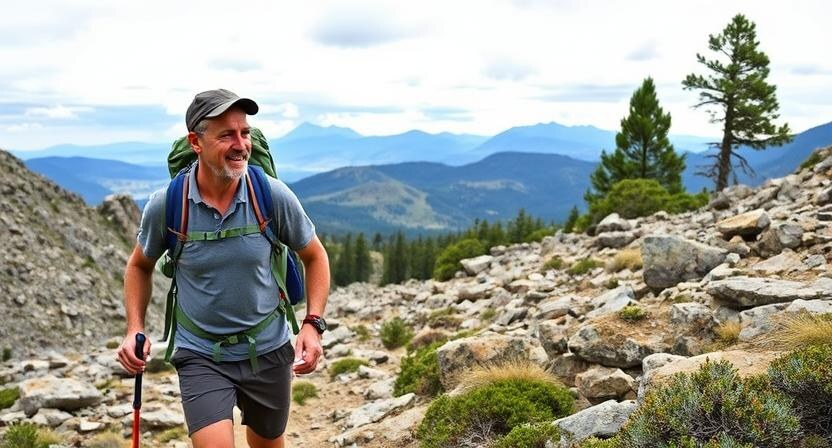
Mike Turner was not just an ordinary hiker—he was a passionate outdoorsman and a Presbyterian minister from Caldwell, Idaho. His love for the wilderness was evident in his frequent backpacking trips and solo hikes across challenging terrains.
A Passionate Outdoor Enthusiast
Turner was known for his adventurous spirit, often seeking remote and rugged locations. He enjoyed trekking alone, believing that solitude in the wilderness was both a physical challenge and a spiritual journey. His experience in hiking made him confident in navigating tough landscapes, yet even the most experienced hikers can face unforeseen dangers.
The Planned Route vs. the Actual Path Taken
Turner’s original plan was to hike through the Fitzpatrick Wilderness, a remote backcountry area in Wyoming, known for its rocky terrain and unpredictable weather. However, he deviated from his planned route, a decision that would later prove fatal. Straying off-course is a common mistake among hikers, often leading to difficulty in rescue efforts.
Solo Trekking Risks and Challenges
Hiking alone can be a peaceful experience, but it also comes with risks. Without a hiking partner, there’s no one to assist in case of an emergency. Turner’s story highlights the importance of informing someone about your hiking plans, carrying a satellite communicator, and being extra cautious in remote terrains.
What Happened to Mike Turner, the Hiker?
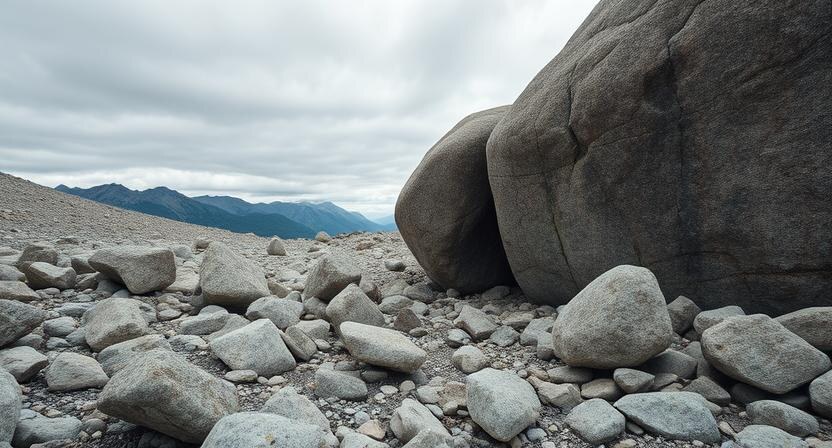
Mike Turner’s hiking trip took a tragic turn on August 2, 1998, when he became trapped between boulders in a remote area of the Fitzpatrick Wilderness. His journal entries later revealed the painful details of his last days and desperate survival attempts.
How Did Mike Turner Get Trapped?
While crossing a boulder field, a large rock unexpectedly shifted, pinning his legs between two massive stones. With no one around to assist him, Turner made multiple failed attempts to free himself, using whatever tools he had, including a camera tripod.
At an elevation of 11,500 feet, Turner faced extreme conditions. Harsh weather, lack of mobility, and limited resources made his survival efforts incredibly difficult.
How Long Did Mike Turner Survive?
Despite his dire situation, Turner managed to stay alive for approximately 9 days before succumbing to hypothermia and dehydration on or around August 11, 1998. His ability to melt snow for water and ration his supplies demonstrated remarkable survival instincts, yet the lack of external help sealed his fate.
Survival Efforts and Last Journal Entries
Turner left behind heartbreaking journal entries, where he:
- Detailed his survival struggles, including his attempts to stay warm by wrapping himself in extra clothing and his tent.
- Described his physical condition worsening over time as dehydration and exhaustion set in.
- Left messages for his family, expressing love and acceptance of his fate.
His dog, Andy, remained near him for days before wandering off, eventually leading hikers to the area.
His story is a powerful cautionary tale for both beginner and experienced hikers, emphasizing that nature’s unpredictability requires vigilance and preparedness.
Mike Turner’s Journal – A First-Hand Account of Survival

When rescuers discovered Mike Turner’s journal, it provided a haunting yet valuable account of his final days. Tucked inside a Ziplock bag, his notes documented his struggle, survival tactics, and emotional reflections. This firsthand record not only shed light on his resilience but also serves as a powerful lesson for hikers about preparedness and survival.
Key Entries and Survival Tactics Mentioned in His Notes
Turner wrote methodically about his failed attempts to free himself from the boulder that had trapped his legs. He described how he used a camera tripod to try and lift the rock, but it barely budged. Despite limited mobility, he managed to melt snow for drinking water, using a single-burner stove fueled by what he had in his pack. His journal revealed his growing dehydration and fatigue, yet he tried to ration his food and supplies in hopes of a rescue.
His resourcefulness was evident in how he used extra layers and his tent for insulation against the harsh cold at 11,500 feet. Despite his best efforts, he gradually weakened due to hypothermia and dehydration, a grim reminder of how crucial proper planning and emergency tools are for solo hikers.
What Emotions and Messages He Left Behind for His Family
Beyond survival strategies, Turner’s journal became a final letter to his loved ones. He expressed regret for deviating from his original route, acknowledged the low chances of being found, and left heartfelt messages for his wife, children, and friends. His words reflected both hope and acceptance, making his journal an emotional and sobering reminder of the dangers of hiking alone without proper communication devices.
Where Was Mike Turner Trapped?
Turner’s ordeal unfolded in the Browns Cliffs area of the Fitzpatrick Wilderness, a rugged and remote section of the Wind River Range in Wyoming. Known for its steep cliffs, boulder fields, and unpredictable weather, this area poses serious challenges for even the most seasoned hikers.
The Geography and Challenges of the Area
Fitzpatrick Wilderness is characterized by rocky terrain, alpine lakes, and harsh weather conditions. At over 11,000 feet elevation, temperatures can drop rapidly, and snowfall can occur even in summer. The terrain is difficult to navigate, with loose rocks, treacherous slopes, and no cell service, making self-rescue nearly impossible in emergencies.
Why Rescue Teams Couldn’t Find Him Sooner
One of the main reasons Turner remained undiscovered for weeks was that he had deviated from his planned route. Since he had not shared his exact itinerary, search teams had no clear starting point. Additionally, his location was concealed by boulders, making it difficult for aerial searches to spot him. The dense wilderness and unpredictable weather further delayed the search efforts, reinforcing the importance of carrying GPS trackers and personal locator beacons (PLBs) when hiking solo.
How Search & Rescue Teams Found Mike Turner
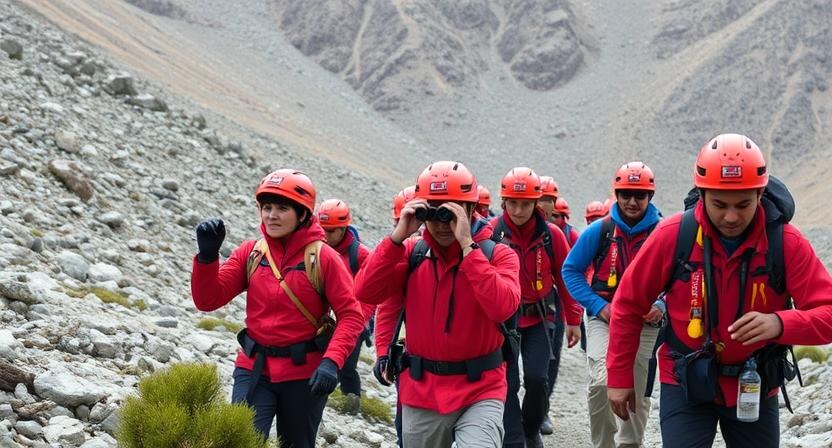
Turner’s disappearance sparked a large-scale search effort involving local authorities, volunteers, and fellow hikers. Despite weeks of searching, it was two backpackers who finally stumbled upon the clues that led to him.
The Role of Hikers and Backpackers in Locating Him
A group of hikers found Turner’s dog, Andy, wandering miles away from the site. This sighting refocused search efforts, as rescuers realized that the dog had likely strayed from Turner’s last known location. Soon after, another hiker discovered personal belongings near a rock field, ultimately leading to the discovery of his journal and remains.
When and Where His Body Was Found
On August 31, nearly a month after he set out, Turner’s remains were discovered between two massive boulders. His tent and survival gear were still in place, showing his efforts to stay alive despite the extreme conditions. His body was found just 25 feet from a water source, highlighting the cruel irony of his situation—so close, yet completely unreachable due to his immobilized legs.
His Dog Andy’s Survival Story and How Backpackers Helped

One of the most heartbreaking yet inspiring aspects of this tragedy is Andy’s survival. Despite the ordeal, Turner’s dog stayed near him for days before eventually wandering off in search of food. Found nearly 17 miles from Elkhart Park, Andy was weak but alive. The hiking community rallied around him, ensuring that Turner’s loyal companion was cared for and reunited with his family.
Lessons Hikers Can Learn from Mike Turner’s Story
Mike Turner’s tragic story carries valuable lessons for all outdoor enthusiasts. His experience underscores the importance of preparation, survival knowledge, and emergency planning when heading into the wilderness.
Always Share Your Itinerary and Stick to It
One of the biggest mistakes Turner made was not sticking to his planned route. If he had followed his original path, search teams could have found him much sooner. Always leave a detailed itinerary with a trusted person and use hiking apps that allow live tracking.
Carry Emergency Communication Devices
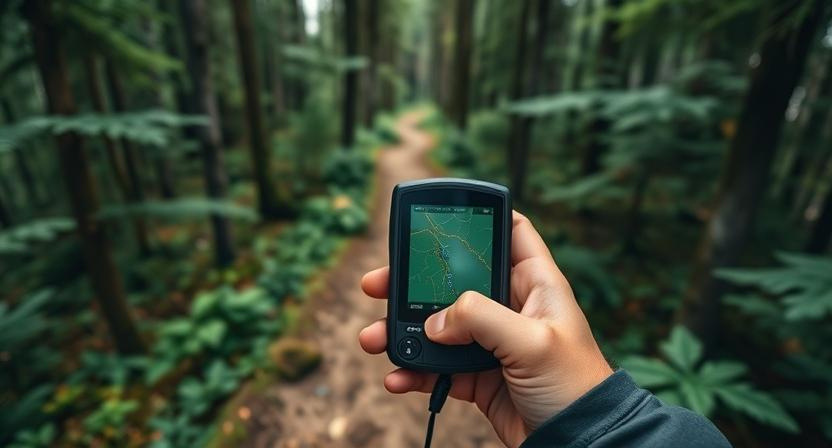
Had Turner carried a GPS device or satellite communicator, he could have sent an SOS signal for rescue. In remote areas without cell service, a PLB (Personal Locator Beacon) or a Garmin inReach device can be a lifesaver.
Essential Survival Skills for Solo Hikers
Survival in extreme conditions requires knowledge of:
- Water sourcing: Carrying a portable water filter would have helped Turner access water safely.
- Signaling for help: Using bright clothing, mirrors, or distress signals increases the chance of being seen.
- Basic first aid and injury management: Knowing how to handle hypothermia, dehydration, and immobilization is critical for survival.
The Impact of Mike Turner’s Story on the Hiking Community
Mike Turner’s tragic story sent shockwaves through the hiking community, becoming a sobering reminder of the risks associated with solo hiking. His ordeal, documented through his journal entries and rescue efforts, raised critical awareness about wilderness safety and the importance of emergency preparedness.
How Turner’s Tragic Fate Raised Awareness About Hiking Safety
Before Turner’s story emerged, many hikers underestimated the importance of detailed trip planning and survival gear. His unfortunate entrapment and eventual passing highlighted how quickly conditions can turn fatal in remote locations. In response, outdoor enthusiasts, hiking forums, and survival experts began emphasizing:
- The necessity of carrying personal locator beacons (PLBs) or satellite messengers for emergency communication.
- The importance of sticking to pre-planned routes and informing someone about hiking plans.
- Why solo hikers should always have backup plans, survival skills, and the right gear to endure unforeseen situations.
Turner’s experience serves as a powerful case study in hiking safety courses, teaching both beginners and seasoned adventurers how to be better prepared.
Changes in Hiking Recommendations and Safety Measures Post-Incident
Following Turner’s tragedy, outdoor safety organizations and local hiking communities began revising their hiking safety guidelines. Some notable changes include:
- Mandatory GPS Devices for Solo Hikers: Several outdoor groups now strongly advise or require hikers venturing into remote areas to carry satellite-based emergency communication devices.
- Stronger Route Planning Awareness: Hiking clubs emphasize route documentation and real-time location sharing to minimize the risks of hikers going missing.
- Emergency Training and Survival Workshops: More hikers are enrolling in basic wilderness survival courses, first aid training, and navigation skills programs.
Many hikers, moved by Turner’s story, have also taken to social media and hiking blogs to advocate for better preparedness, gear recommendations, and survival best practices.
The Hiking Community’s Tribute and Memorials
The loss of Mike Turner left a deep impact on both his loved ones and the larger outdoor community. To honor his legacy and caution future adventurers, several tributes and memorials have been established:
- Dedicated Memorial Hikes: Some hikers retraced his intended route in Fitzpatrick Wilderness, marking the spot where he was found as a reminder of the dangers of solo hiking.
- Safety Awareness Campaigns: Several outdoor groups launched awareness initiatives focused on backcountry survival, GPS usage, and the importance of safety check-ins.
- Mike Turner’s Story in Survival Guides: His journal entries and experience have been included in multiple wilderness survival books, documentaries, and blog articles, reinforcing the need for caution and preparation in extreme conditions.
Turner’s resilience and determination in his final days continue to inspire hikers worldwide to take safety and preparedness seriously, ensuring his story is never forgotten.
FAQs – Everything You Need to Know About Mike Turner’s Tragic Hike
What happened to Mike Turner, the hiker?
Mike Turner, a Presbyterian minister and experienced hiker, became trapped between boulders while hiking in Fitzpatrick Wilderness. Despite his survival efforts, he succumbed to hypothermia and dehydration after days of being stranded.
How long did Mike Turner survive?
Based on his journal entries, Turner was trapped on August 2 and survived until around August 11, enduring nearly nine days in harsh conditions before succumbing to the elements.
Where was Mike Turner trapped?
He was trapped at an elevation of 11,500 feet in the Browns Cliffs area of Fitzpatrick Wilderness, Wyoming. The rugged terrain and remote location made rescue efforts extremely difficult.
Final Thoughts – A Story of Resilience & Hiking Safety
Mike Turner’s tragic yet inspiring story serves as a powerful lesson for every hiker. His determination to survive despite the odds is a testament to human resilience, but his fate also highlights the crucial need for proper hiking safety measures.
Before heading into the wilderness, ask yourself:
- Do I have the necessary gear, including GPS, survival tools, and emergency supplies?
- Have I informed someone about my route and expected return time?
- Am I prepared for unexpected situations, including injuries, weather changes, and isolation?
Turner’s experience reminds us that nature is unpredictable, and preparation is key. Whether you’re an experienced hiker or a beginner, learning from his story can help ensure your safety on the trail.
Moreover, if you’re new to hiking or confused about why to go on hiking then this guide will be helpful.
Read More About Hiking Safety & Survival Tips:
What to Wear on a Hiker
How to Train for Hiking
Hiking for Beginners: Safety & Preparation
Ethan Marlowe is an experienced hiker and outdoor gear specialist based in Colorado. With over 7 years of hands-on experience trekking through the Rockies, Pacific Northwest, and East Coast trails, he delivers practical advice, expert gear reviews, and survival insights. His goal is to help hikers of all levels make smarter decisions on and off the trail.

